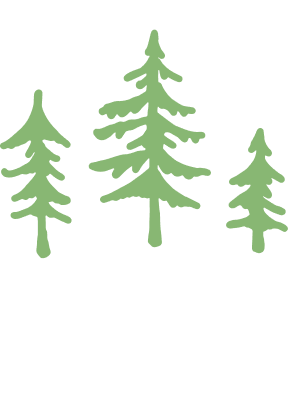Moroccan People Culture: Exploring the Richness of Cuisine, Music, Architecture, Art, Religion, and Tradition
Morocco is a country that is rich in culture, history, and tradition. The Moroccan people and culture are unique and diverse, with influences from Arab, Berber, African, and Jewish cultures. The country is known for its beautiful architecture, vibrant music scene, and delicious cuisine. In this article, we will explore the Moroccan people culture, including their ethnicity, language, and religion, customs and traditions, cuisine, music scene, architecture, and art.
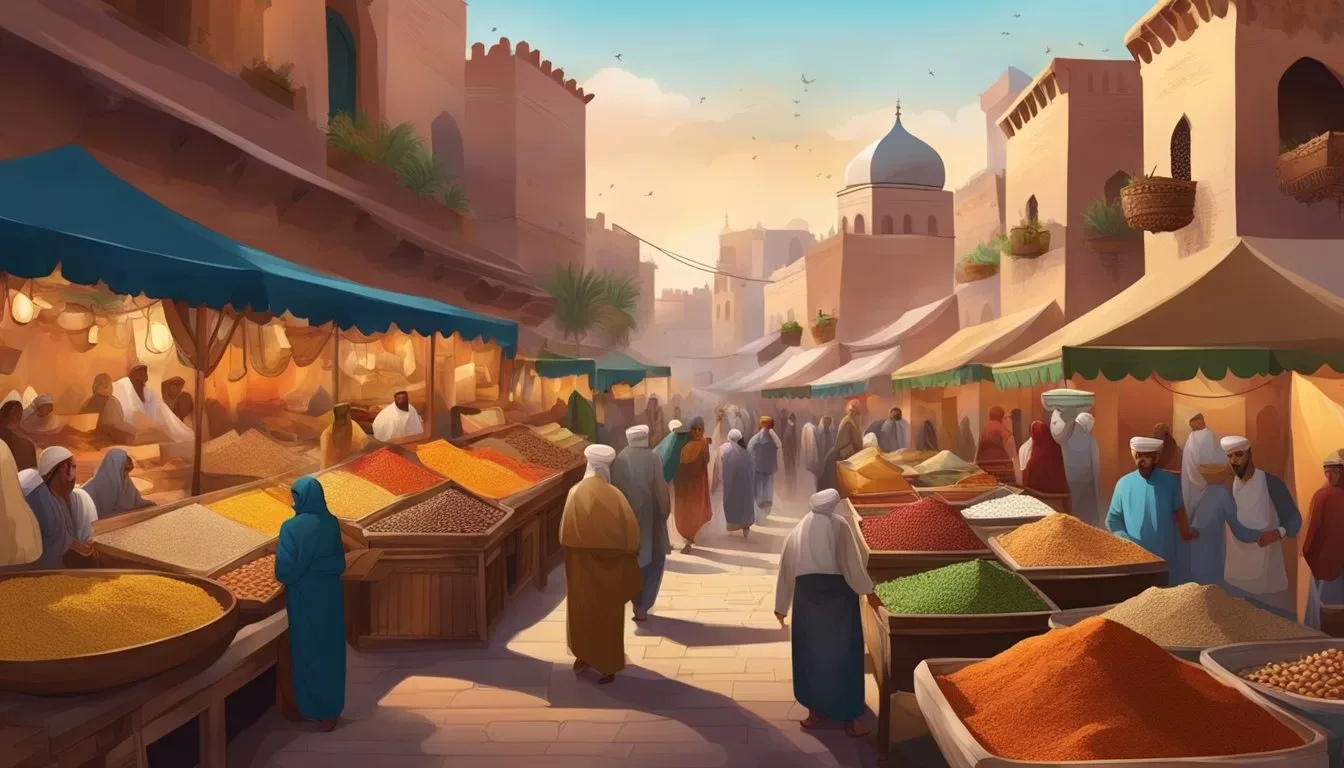
Ethnicity, Language and Religion are central to Moroccan culture. The country is home to a diverse population, with the two major ethnic groups being the Arabs and the Berbers. Moroccan Arabic is the official language of the country, but French and Berber are also widely spoken. Islam is the dominant religion in Morocco, with nearly 99% of the population being Muslim. The country’s rich cultural heritage is reflected in its language, religion, and customs.
Customs and Traditions are an essential part of Moroccan People Culture. Moroccan people are known for their hospitality and generosity. They have a strong sense of community and family, and traditional values are highly respected. Moroccan weddings are elaborate affairs that can last up to three days, with traditional music, dancing, and food. Ramadan is an important month in the Islamic calendar, and it is celebrated with fasting during the day and feasting at night.
Moroccan Cuisine is world-renowned for its unique blend of spices and flavors. The country’s cuisine is a reflection of its diverse cultural influences, with Arab, Berber, African, and Jewish flavors all coming together to create a delicious and distinctive cuisine. Tagine, a slow-cooked stew named after the distinctive clay pot it’s cooked in, is one of Morocco’s signature dishes. Another Moroccan favorite is couscous, a staple of the cuisine.
Music Scene in Morocco is vibrant and diverse, with traditional music playing an important role in the country’s cultural heritage. The country is home to a wide range of musical styles, from Berber music in the Atlas Mountains to Gnawa music in the south. Moroccan music is known for its intricate rhythms and melodies, and it has influenced many other musical styles around the world.
Architecture and Art in Morocco are also an essential part of the country’s cultural heritage. The country is home to some of the most beautiful and intricate architecture in the world, with stunning examples of Islamic architecture, including mosques, palaces, and madrasas. Moroccan art is also diverse and unique, with traditional crafts such as pottery, weaving, and metalwork still being practiced today.
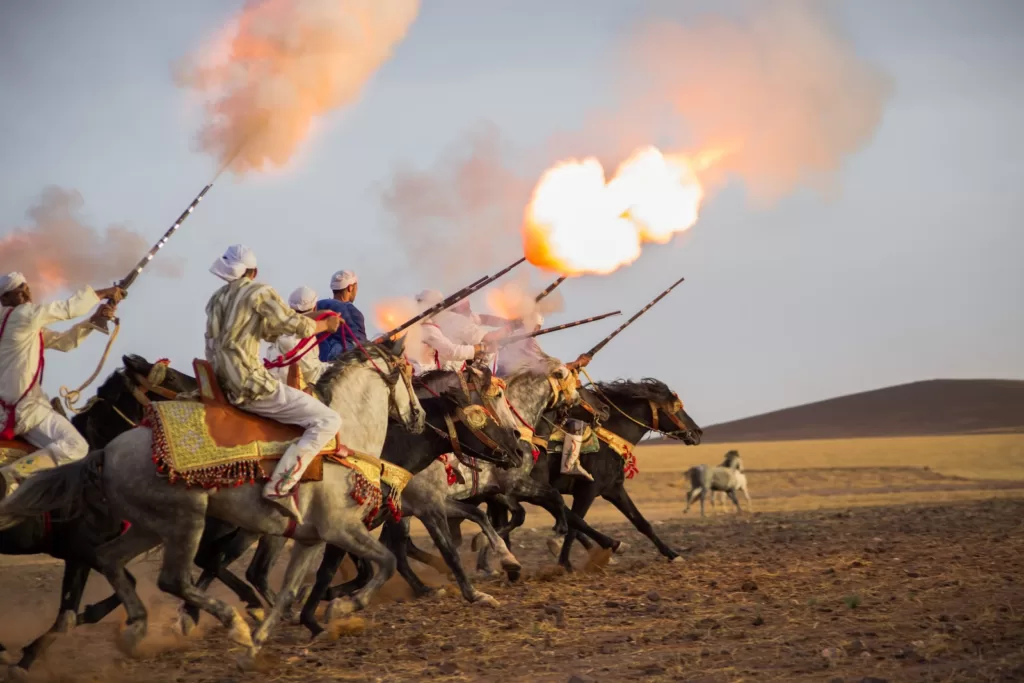
Key Takeaways
- Moroccan People Culture are diverse and unique, with influences from Arab, Berber, African, and Jewish cultures.
- Moroccan Cuisine is world-renowned for its unique blend of spices and flavors, and traditional music plays an important role in the country’s cultural heritage.
- Moroccan Architecture and Art are also an essential part of the country’s cultural heritage, with stunning examples of Islamic architecture and traditional crafts still being practiced today.
Moroccan People Culture
Morocco is a fascinating country with a rich and diverse culture that has been shaped by centuries of history and a variety of different influences. The people of Morocco are known for their hospitality, warmth, and generosity, and visitors to the country are often struck by the incredible diversity of the population.
Ethnic Groups and Languages
Morocco is home to a number of different ethnic groups, including the Berbers, Arabs, and sub-Saharan Africans. The Berbers are the indigenous people of Morocco and are believed to have been present in the region for thousands of years. They speak a variety of different languages, including Tamazight, Tashelhit, and Tarifit, which are all part of the Berber language family.
The majority of Moroccans are Arab and speak Moroccan Arabic, which is a dialect of Arabic that has been heavily influenced by Berber and French. French is also widely spoken in Morocco, particularly in business and government circles.
Religious Beliefs and Practices
Morocco is a predominantly Muslim country, with over 99% of the population adhering to Islam. The country’s official religion is Sunni Islam, and the majority of Moroccans follow the Maliki school of Islamic jurisprudence.
Despite its Islamic heritage, Morocco is a relatively liberal country, and many Moroccans are quite secular in their outlook. Nevertheless, Islam plays an important role in Moroccan society, and visitors to the country are likely to encounter several different religious customs and practices.
Social Customs and Traditions
Moroccan society is known for its strong emphasis on family and community. Family ties are particularly important in Moroccan People Culture, and extended families often live together in large, multi-generational households.
Moroccans are also known for their hospitality and generosity, and visitors to the country are likely to be offered food and drink by their hosts. It is considered impolite to refuse such offers, and visitors are encouraged to accept them graciously.
Clothing and Dress
Moroccan dress is known for its bright colors and intricate patterns. Traditional Moroccan clothing for men includes the djellaba, a long, loose-fitting robe, and the fez, a type of hat. Women often wear the kaftan, a long, flowing dress that is typically made from silk or other luxurious fabrics.
In more conservative parts of the country, particularly in rural areas, it is still common for women to wear the hijab or other forms of Islamic dress.
Festivals and Celebrations
Morocco is home to a number of different festivals and celebrations throughout the year. One of the most important is Ramadan, which is the Muslim holy month of fasting. During Ramadan, Moroccans fast from dawn until dusk, and the country takes on a festive atmosphere in the evenings as families gather to break their fasts together.
Other important festivals in Morocco include Eid al-Fitr, which marks the end of Ramadan, and Eid al-Adha, which commemorates Abraham’s willingness to sacrifice his son.
Related Posts:
- From Fes to Marrakech Visiting Morocco During Ramadan 2024: best Tips and Guidelines
- Almond Blossom Festival Morocco 2024: Dates, Events, and Everything You Need to Know
- Why You Should Visit the Sahara Desert in Morocco
Moroccan Cuisine
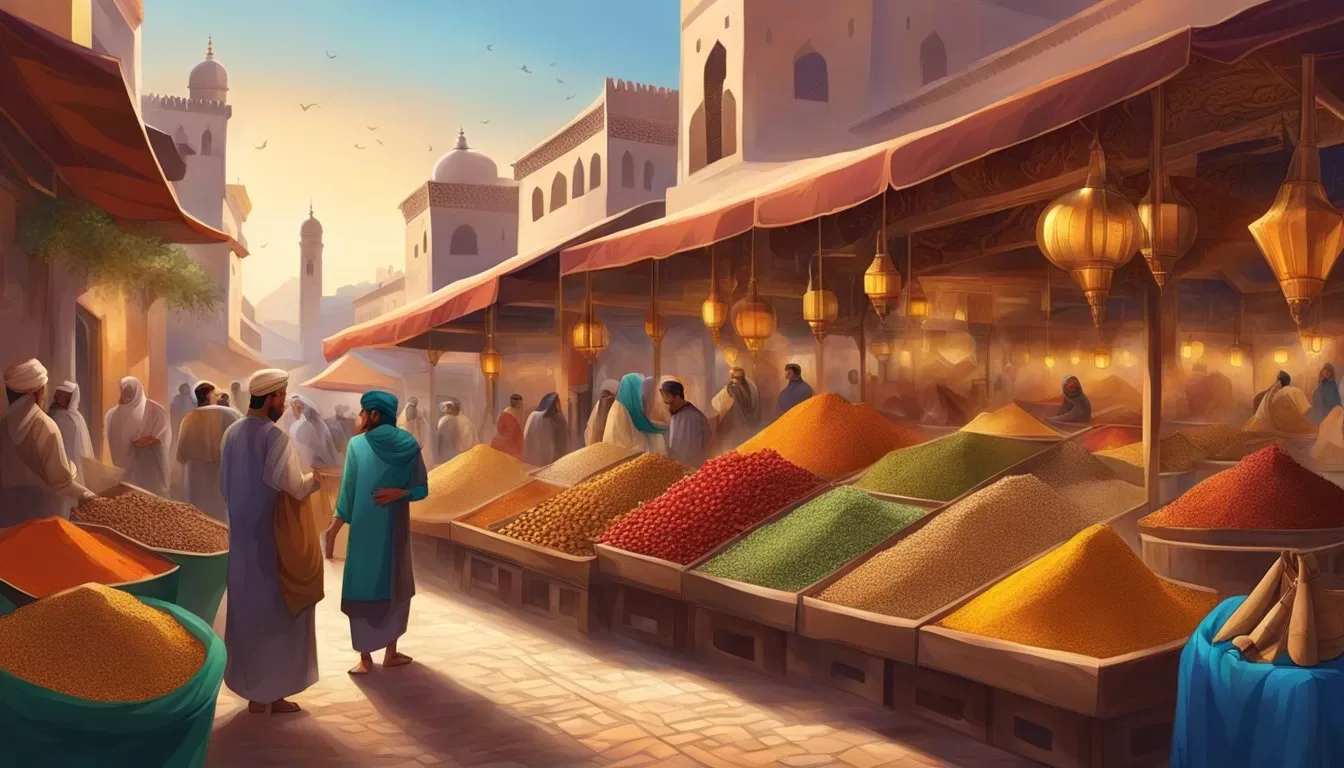
Moroccan cuisine is a blend of Berber, Andalusian, Mediterranean, and Arab cuisines, with minimal European and sub-Saharan influences. The cuisine is known for its bold flavors, spices, and herbs. Moroccan cuisine is a reflection of the country’s diverse cultural influences and history.
Traditional Dishes
Moroccan cuisine is famous for its tagines, which are slow-cooked stews made with meat, vegetables, and spices. The most popular tagine is the chicken tagine with preserved lemons and olives. Another popular dish is couscous, which is a staple food in Morocco. It is served with meat or vegetables and a spicy sauce. Harira soup is another traditional dish that is served during Ramadan. It is a hearty soup made with lentils, chickpeas, and tomatoes.
Street Food
Moroccan street food is a must-try for foodies. The most popular street food is the bissara, which is a thick soup made with fava beans, garlic, and cumin. Another popular street food is the merguez, which is a spicy lamb sausage. Other street foods include msemen, which is a flaky bread, and chebakia, which is a sweet pastry.
Culinary Influences
Moroccan cuisine has been influenced by various cultures and nations over the centuries. The Berbers, who are the indigenous people of Morocco, have had a significant influence on Moroccan cuisine. The Arabs, who conquered Morocco in the 7th century, brought with them new ingredients and spices. The Moors, who ruled Spain for centuries, also had an impact on Moroccan cuisine. The French and Spanish colonizers also left their mark on Moroccan cuisine.
Eating Habits
Moroccan eating habits are influenced by religion and tradition. Muslims in Morocco fast during the holy month of Ramadan, and they break their fast with a bowl of harira soup and dates. Moroccans also eat with their hands, using bread to scoop up food. Tea is a staple drink in Morocco, and it is served with mint and sugar.
Related Posts:
- Best Places to Eat in Marrakech Medina: A Guide to the Top Restaurants and Cafes
- Top Rooftop Cafes in Essaouira for Breathtaking Views and a Relaxed Atmosphere
- How Do Moroccans Eat Couscous: Unveiling the Cultural Delight
- Best Vegan and Vegetarian Restaurants in Morocco: A Guide to Delicious Plant-Based Cuisine
Music Scene
Moroccan music is a rich tapestry of sounds and rhythms that reflect the country’s diverse cultural heritage. It is a blend of Arab, Berber, African, and European influences, making it a unique and vibrant musical tradition.
Traditional Music
Moroccan traditional music is deeply rooted in the country’s history and culture. It is often associated with religious and spiritual practices, and it is performed at various social events such as weddings, festivals, and religious ceremonies. The most popular traditional music genres in Morocco are Andalusian music, Gnawa music, and Amazigh music.
Andalusian music is a form of classical Arabic music that originated in Andalusia, Spain, during the Islamic Golden Age. It was brought to Morocco by Muslim refugees who fled Spain during the Christian Reconquista. Andalusian music is characterized by its complex melodies, intricate rhythms, and poetic lyrics.
Gnawa music is a spiritual music genre that originated in the southern regions of Morocco. It is performed by the Gnawa people, who are descendants of West African slaves brought to Morocco during the trans-Saharan slave trade. Gnawa music is characterized by its hypnotic rhythms, call-and-response vocals, and the use of traditional instruments such as the guembri and the krakebs.
Amazigh music, also known as Berber music, is the traditional music of the Amazigh people, who are the indigenous people of North Africa. It is performed in various regions of Morocco, and it is characterized by its use of traditional instruments such as the lute, the bendir, and the tabl.
Modern and Popular Music
Moroccan modern and popular music is a fusion of traditional and contemporary styles. It is often influenced by Western music genres such as pop, rock, and hip-hop. Moroccan pop music is characterized by its catchy melodies, upbeat rhythms, and the use of electronic instruments.
One of the most popular Moroccan pop singers is Saad Lamjarred, who has gained international fame with his hit songs such as “Lm3allem” and “Ghazali”. Another popular Moroccan singer is Amine Aminux, who is known for his romantic songs and soulful voice.
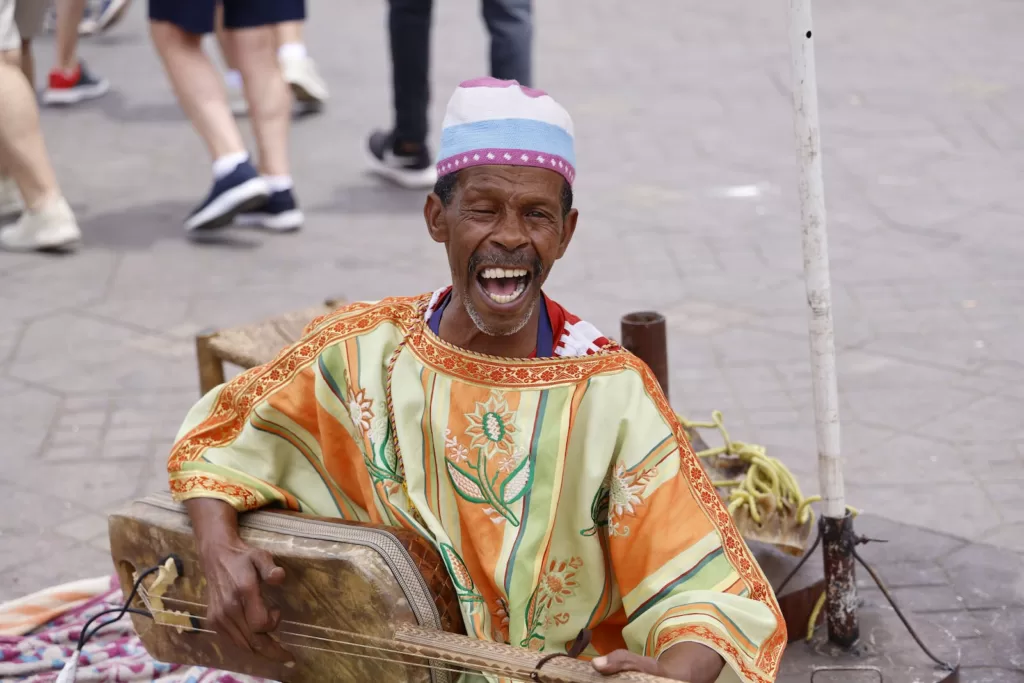
Music Festivals
Morocco is home to several music festivals that celebrate the country’s rich musical heritage. The most famous music festival in Morocco is the Fes Festival of World Sacred Music, which takes place annually in the city of Fes. The festival features performances by traditional and contemporary musicians from around the world, and it is a celebration of spiritual and cultural diversity.
Other popular music festivals in Morocco include the Essaouira Gnaoua and World Music Festival, the Mawazine World Rhythms Festival, and the Tanjazz International Jazz Festival. These festivals attract thousands of music lovers from around the world and showcase the best of Moroccan and international music.
In conclusion, Moroccan music is a vibrant and diverse musical tradition that reflects the country’s rich cultural heritage. From traditional Andalusian music to contemporary pop music, Morocco has something to offer for every music lover.
Architecture and Art
Morocco is famous for its rich architectural heritage and artistic traditions. The country has a unique blend of styles and influences that reflect its diverse history and cultural heritage. Moroccan architecture is known for its intricate geometric patterns, vibrant colors, and ornate details that are seen in mosques, palaces, and other historic buildings throughout the country.
Historic Architecture
Moroccan architecture has been shaped by various cultures and civilizations that have left their mark on the country over the centuries. The most notable examples of historic architecture in Morocco are the Islamic monuments such as the Koutoubia Mosque in Marrakech, the Hassan II Mosque in Casablanca, and the Al-Attarine Madrasa in Fes. These buildings reflect the country’s Islamic heritage and feature intricate geometric patterns, calligraphy, and colorful tiles.
Another important aspect of Moroccan architecture is the traditional riad, a type of house or palace with an interior courtyard or garden. Riads are typically built around a central courtyard and feature ornate details such as carved cedar wood ceilings, colorful tiles, and intricate plasterwork.
Contemporary Art Scene
Morocco has a thriving contemporary art scene that has gained international recognition in recent years. The country has produced many talented artists who have gained recognition for their unique styles and perspectives. The contemporary art scene in Morocco is diverse and includes a wide range of mediums such as painting, sculpture, photography, and installation art.
One of the most notable contemporary artists from Morocco is Hassan Hajjaj, who is known for his colorful and playful photographs that blend traditional Moroccan People Culture with a modern twist. Another prominent artist is Lalla Essaydi, who is known for her large-scale photographs that challenge traditional gender roles and explore the complex relationship between women and Islamic culture.
Craftsmanship
Morocco is also famous for its traditional craftsmanship, which includes pottery, ceramics, textiles, and metalwork. The country has a rich tradition of handmade crafts that have been passed down through generations. One of the most famous examples of Moroccan craftsmanship is the intricate zellige tilework, which is made by hand and features colorful geometric patterns.
Another important aspect of Moroccan craftsmanship is the traditional pottery and ceramics that are produced in various regions throughout the country. Tamegroute, a small village located in the Draa Valley of Morocco, is known for its unique pottery and ceramics. The craft has been passed down through generations and is still made using traditional techniques.
Related Posts:
Moroccan People Culture: Frequently Asked Questions
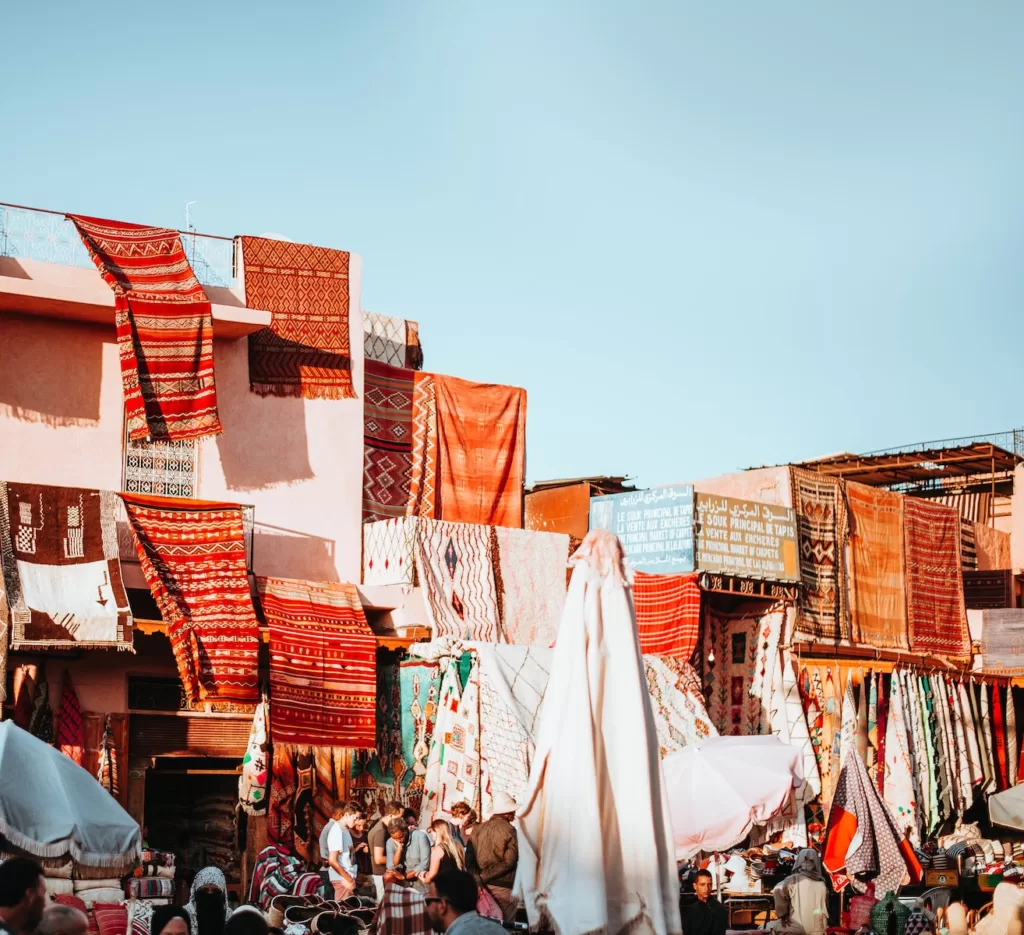
How do Moroccan family traditions influence daily life?
Family is the cornerstone of Moroccan society. Family traditions and customs are deeply ingrained in the culture and are reflected in daily life. Moroccan families are typically large and extended, with multiple generations living under one roof. The eldest male is usually the head of the household and is responsible for making important decisions. Family members are expected to show respect to their elders and to maintain close relationships with their relatives.
What are the key characteristics of Moroccan architecture?
Moroccan architecture is characterized by its intricate geometric patterns, vibrant colors, and ornate decoration. The country’s diverse cultural heritage is reflected in its architecture, which draws on influences from Berber, Arab, Andalusian, and European styles. Some of the key features of Moroccan architecture include the use of courtyards and gardens, the incorporation of water features, and the use of traditional building materials such as adobe and plaster.
Can you describe the traditional attire worn in Morocco?
Traditional Moroccan attire varies depending on the region and the occasion. The most common traditional garment for men is the djellaba, a long, loose-fitting robe that is often made of wool. Women typically wear a kaftan, a long, flowing dress that is often made of silk or other luxurious fabrics. Both men and women often wear a fez, a type of hat that is made of felt and has a tassel on top.
What are the major differences between Moroccan and American cultural practices?
Moroccan and American cultural practices differ in many ways. For example, Moroccans tend to place a greater emphasis on family and community, while Americans tend to prioritize individualism. Moroccan People Culture is also heavily influenced by Islam, which shapes many aspects of daily life, including food, dress, and social interactions. In contrast, American culture is more secular and diverse, with many different religions, beliefs, and traditions coexisting.
What are some traditional dishes that define Moroccan cuisine?
Moroccan cuisine is famous for its bold flavors and unique combinations of spices. Some of the most popular dishes include tagine, a slow-cooked stew that is typically made with meat, vegetables, and spices; couscous, a grain dish that is often served with vegetables and meat; and harira, a hearty soup that is often eaten during Ramadan. Other popular dishes include pastilla, a savory pastry filled with meat and almonds, and b’stilla, a sweet and savory pie made with pigeon meat and spices.
How does music reflect the cultural diversity of Morocco?
Moroccan music is incredibly diverse and reflects the country’s rich cultural heritage. Traditional Moroccan music includes genres such as Gnawa, which is influenced by West African and Islamic music, and Andalusian music, which has roots in the music of medieval Spain. Other popular genres include Chaabi, a type of popular music that is often played at weddings and other celebrations, and Rai, a style of music that originated in Algeria and has since spread throughout North Africa.
Overall, Moroccan People Culture are incredibly diverse and rich in history and tradition. From the country’s unique architecture and art to its vibrant cuisine and music scene, Morocco offers a wealth of cultural experiences for visitors and locals alike.




